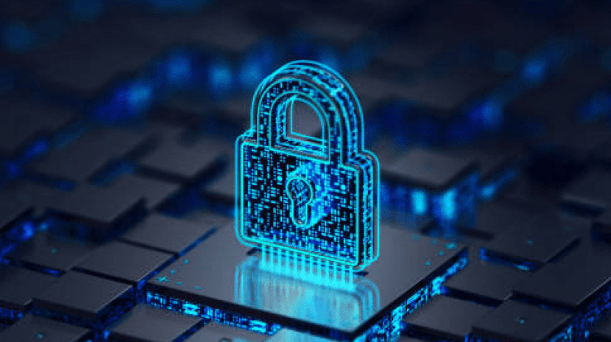In our increasingly connected world, where everything from personal messages to critical infrastructure runs on digital networks, network security has become a cornerstone of modern technology. From protecting sensitive data to ensuring business continuity, network security isn’t just a tech issue—it’s a foundational element of trust in the digital age.
This article dives deep into what network security is, why it matters, its key components, common threats, and best practices for protection.
What Is Network Security?
Network security refers to the policies, practices, and technologies used to protect the integrity, confidentiality, and availability of data and resources in a computer network. It involves securing both the hardware and software technologies that connect and manage data traffic between systems.
At its core, network security aims to:
- Prevent unauthorized access
- Ensure data privacy and integrity
- Detect and mitigate cyber threats
- Support compliance with regulatory standards (e.g., GDPR, HIPAA)
Why Is Network Security Important?
With the expansion of cloud computing, IoT (Internet of Things), and remote work, networks have become larger and more complex. This makes them more vulnerable to cyberattacks, data breaches, and system failures.
Consequences of poor network security include:
- Financial loss from ransomware or fraud
- Reputation damage from public breaches
- Legal consequences due to non-compliance
- Operational downtime, which can halt business functions
According to IBM’s Cost of a Data Breach Report (2023), the average cost of a data breach is over $4.45 million, underscoring the high stakes of effective security.
Core Components of Network Security
Effective network security is multi-layered and includes several interlocking components. Here’s a breakdown of the most critical elements:
1. Firewalls
Firewalls act as the first line of defense by filtering incoming and outgoing traffic based on defined security rules. They can be hardware-based, software-based, or cloud-managed.
2. Intrusion Detection and Prevention Systems (IDPS)
These systems monitor network traffic for suspicious activities and automatically respond to potential threats.
- IDS (Detection) alerts admins of anomalies.
- IPS (Prevention) blocks threats in real-time.
3. Antivirus and Anti-malware Software
Protects systems from malicious software such as viruses, worms, trojans, and ransomware. Regular updates are essential to defend against evolving threats.
4. Virtual Private Networks (VPNs)
VPNs encrypt internet connections, allowing secure access to a private network over a public one—especially critical for remote workers.
5. Access Control
This involves defining who can access the network and what they can do. Includes:
- Authentication (passwords, biometrics, MFA)
- Authorization (user roles, privileges)
- Network segmentation to limit access
6. Data Loss Prevention (DLP)
DLP tools monitor data transfers and prevent sensitive data from being shared outside the network, either accidentally or maliciously.
7. Email Security
Phishing attacks are a major threat vector. Email security solutions scan incoming messages for malicious content and filter out spam or suspicious attachments.
8. Endpoint Security
Endpoints (devices like laptops and smartphones) are common targets. Endpoint Detection and Response (EDR) tools help monitor and protect these devices.
Common Network Security Threats
Understanding threats is key to defending against them. Here are the most common and dangerous network security threats:
1. Malware
Includes viruses, worms, trojans, spyware, and ransomware. Malware can infect systems, steal data, or lock users out.
2. Phishing
Deceptive emails or messages trick users into revealing credentials or downloading malware. These attacks often exploit human error.
3. Denial-of-Service (DoS) Attacks
Overwhelm a network with traffic, rendering it unusable. Distributed Denial-of-Service (DDoS) attacks come from multiple sources, making them harder to stop.
4. Man-in-the-Middle (MITM) Attacks
Hackers intercept communication between two parties, often to steal data or credentials.
5. SQL Injection
Attackers exploit vulnerabilities in web applications to access or manipulate databases.
6. Zero-Day Exploits
Attacks that target previously unknown vulnerabilities, leaving systems unprotected until a patch is released.
Best Practices for Network Security
To build a robust security posture, individuals and organizations must adopt best practices:
✔ Keep Systems and Software Updated
Patch management is crucial—outdated software often contains vulnerabilities.
✔ Use Strong Authentication
Implement multi-factor authentication (MFA) for an added layer of security beyond passwords.
✔ Encrypt Sensitive Data
Use encryption for data in transit and at rest to prevent unauthorized access.
✔ Train Employees
Human error is a major vulnerability. Regular cybersecurity training can prevent phishing, poor password hygiene, and social engineering attacks.
✔ Backup Data Regularly
Maintain secure, offline backups to ensure business continuity in case of ransomware or data loss.
✔ Monitor Network Activity
Use logging, monitoring tools, and Security Information and Event Management (SIEM) systems to detect unusual behavior early.
✔ Establish an Incident Response Plan
Be ready to act quickly in the event of a breach with a clear response and recovery strategy.
The Future of Network Security
With AI, 5G, and quantum computing on the horizon, the landscape of network security is rapidly evolving. Future trends include:
- AI-driven threat detection
- Zero Trust Architecture (never trust, always verify)
- Secure Access Service Edge (SASE) for cloud-first networks
- Blockchain-based security protocols
- Security-as-a-Service (SECaaS) from cloud providers
As threats grow more sophisticated, so too must our defenses.
Conclusion
Network security is no longer optional—it’s a strategic imperative. In a world that thrives on digital connectivity, protecting our networks means protecting our data, our businesses, and our privacy.
By understanding the fundamentals, staying alert to new threats, and investing in the right tools and practices, individuals and organizations can stay a step ahead in the ongoing battle for digital security.

